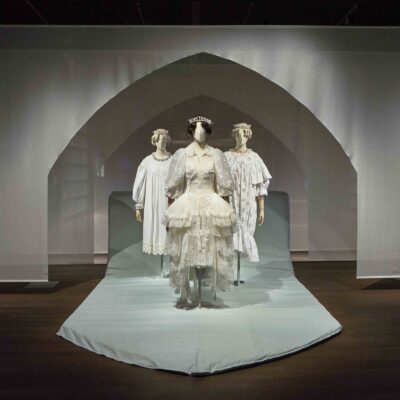
Exhibitions 21.11.2025
07.07.2019
European fashionfashion historysummer fashion
A small history of the most known design for summer
Before the 20th century, nobody really “went swimming”. People did bathe in seawater, but mainly for medical reasons. Even at the beginning of the twentieth century, swimming still was not acceptable for women and their heavy corsets and petticoats certainly did not allow them. WWI changed all that, with the men gone to war, women took up physical work. Their lifestyle and fashion changed accordingly. In 1914, Vogue first published an editorial on bathing suits, but throughout the 1910s bathing suits were conservative and covered a lot of skin. They were made of fabrics like wool and silk, were full of detailing and were heavily accessorised, the parasol being a favorite. The one-piece was first introduced in 1918, but was still considered very avant-garde. It reached down to the knee and was only meant to be uncovered right before the swimmer entered the water.
In the 1920s travelling became fashionable and going to the beach became a stylish pastime. The popularity of sports also made swimming a favourite activity. The beach became a place to bo seen during glamorous holidays in Palm Beach, Deauville and the Cote d’Azur. Fashion responded with swim suits that were more tailored, slim and bare. This trend continued and was pushed further in the 1930s. Fitness was a craze, the body had to be tip-top shapein order to show it off in back-baring, low-cut, tight one pieces that allowed for maximum sun exposure and comfortable swimming at the same time. The two-piece, baring the midriff, also entered the stage at ths time, but was still considered daring.
The bare midriff and a great sun tan became the look du rigueur in the 1940s. Due to wartime fabric shortages, accompanying garments were ditched, but the bathing suit itself became more dressy. The one-piece had now become mainstream and the bottom of the two piece was cut higher on the leg.
In May 1946, Parisian fashion designer Jacques Heim released a two-piece swimsuit design called “the Atome”. However, it was still quite covering and did not cause much ado. It was clothing designer Louis Réard who, in July of the same year, introduced a smaller of the two-piece design. He named the swimsuit “Bikini” after the atoll where the first public test of a nuclear bomb had taken place four days before. His design was so revealing and daring that no runway model would wear it, forcing him to hire a nude dancer from the Casino de Paris to model it on the runway.
The bikini had a hard time being accepted, and the very first years many countries banned it from beaches, considering it indecent. However, thanks to film stars and celebrities, it became a symbol of the sexual revolution that later came into society. The bikini became then widely accepted and even now, in all its variations and models, it is considered one of the most common attires for summer.